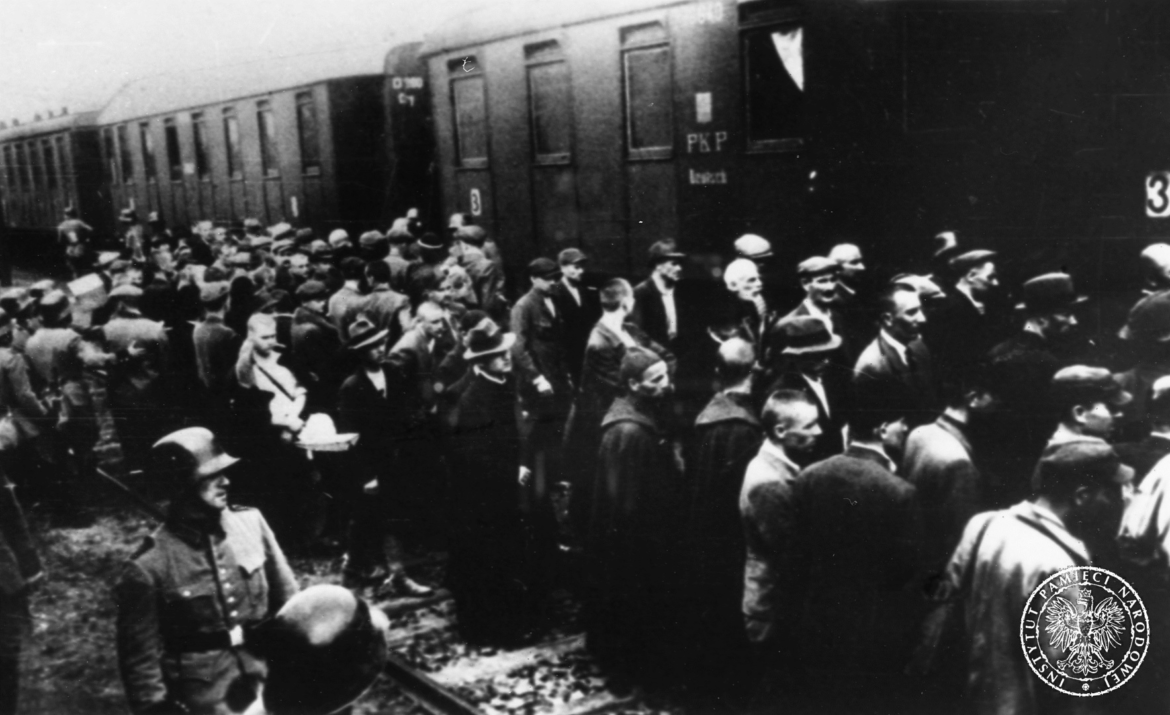On June 14, 1940, the first transport of prisoners from occupied Tarnów arrived at the Konzentration Lager (KL) Auschwitz which was established by the Germans. This date is considered to be the beginning of the functioning of the death machine there. Since 2006, each June 14th is celebrated as the National Day of Remembrance for the Victims of the German Nazi Concentration and Extermination Camps.
In September 1939, Poland became the target of joint aggression by Germany and the Soviet Union. The final result of the cooperation between the two countries was the division of the territory of Poland between the two aggressors, finally completed on September 28, 1939. Then the Third Reich and the Soviet Union concluded a treaty regulating the course of the common border. The two invaders, in close agreement, also took steps to annihilate the Polish elite and the structures of the Polish resistance that had been already forming from September 1939.
Before the invasion of Poland on September 1, 1939, Germany had prepared proscription lists of people who were described as “enemies of the Reich”. These people were detained by a specially created Einsatzgruppen, which operated behind the German army entering Poland. The commanders of these groups, based on the disposition of Adolf Hitler himself, had the right to make decisions about immediate execution. The proscription lists include participants of the Silesian Uprisings and the Greater Poland Uprising. It is assumed that in September and October 1939, German operational groups carried out over 600 executions, during which at least 15,000 people were murdered.
In the spring of 1940, the Germans began the next stage of extermination as part of Operation AB, and consequently, from May to July this year, several thousand people of the Polish social and political elite were murdered.
However, at the end of 1939, the German authorities of the Katowice Region alerted the head of SS, Heinrich Himmler, that there were insufficient places in prisons for Poles. Soon the decision was made to create a concentration camp there. One of the indicated locations was Oświęcim (Auschwitz), incorporated into the territory of the Third Reich. For this purpose, the Germans adapted buildings of the pre-war Polish barracks, used after September 1939 by the Wehrmacht as a temporary camp for prisoners of war. Apart from the existing infrastructure, the key element was also the location of Auschwitz along with the possibility of using the railway line to transport future prisoners. In April 1940, a commission headed by the Hauptsturmführer SS Rudolf Höss, the head of the Sachsenhausen camp assessed the possibility of using the proposed location as a death camp. After receiving the report, Himmler ordered the construction of a concentration camp immediately and appointed Rudolf Höss as its commandant. On May 1, 1940, Höss began preparations for its launch. Less than three weeks later, on May 20, the first transport of prisoners including several dozen German criminals, arrived from Sachsenhausen. Later, they played an auxiliary role for the camp staff, often showing cruelty and abusing fellow prisoners.
On June 14, 1940, the first transport of 728 prisoners from occupied Tarnów arrived in KL Auschwitz. They were given camp numbers from 31 to 758. Among them were people arrested as part of Operation AB, caught in round-ups, members of the emerging underground organizations, some of Jewish origin. The youngest of the newly arrived prisoners, Stanisław Ryniak, was fifteen years old. One of the first prisoners in this transport was Bronisław Czech, a 24-time Polish champion in skiing, arrested by the Germans for conspiratorial activities. After reaching the camp, the Polish group heard the words from SS-Hauptsturmführer Karl Fritzsch: “You came here not to a sanitarium, but to a German concentration camp, from which there is no other way out than through the chimney. If someone does not like it, he can jump straight onto the wires. If there are Jews in the transport, they have the right to live no longer than two weeks, priests a month, the rest three months.”
In March 1941, after the inspection of KL Auschwitz by Heinrich Himmler, a decision was made to expand the camp so that it could accommodate at least 30,000 prisoners. Moreover, in the nearby village of Brzezinka (Birkenau), Germans constructed a camp for 100,000 prisoners of war. Its construction began in October of the same year. The camp for Soviet prisoners of war was liquidated in Birkenau in the spring of 1942, and after another visit by Himmler this summer, a decision was made to further expand Birkenau and use it by the Germans as an extermination camp for the Jewish population, with already functioning Bełżec, Treblinka and Sobibór. For the extermination’s purpose, large gas chambers and crematoria were built.
At the end of 1943, KL Auschwitz was already a camp system, consisting of the main camp of KL Auschwitz I, KL Auschwitz II – Birkenau and KL Auschwitz III -with a network of 9 subsidiary sub-camps.
During the functioning of KL Auschwitz, its commanders were Rudolf Höss (1940-1943), Arthur Liebehensch (1943-1944) and Richard Baer (1944-1945), and over 8,000 members of the SS worked there. Most of them were not sentenced after the end of World War II.
According to historians, it is assumed that the Germans murdered about 1.3 million victims in all KL Auschwitz camps. Jews constituted the vast majority – 1.1 million, then Poles – 150 thousand, Roma over 20 thousand, and the remaining victims were 30 thousand.





